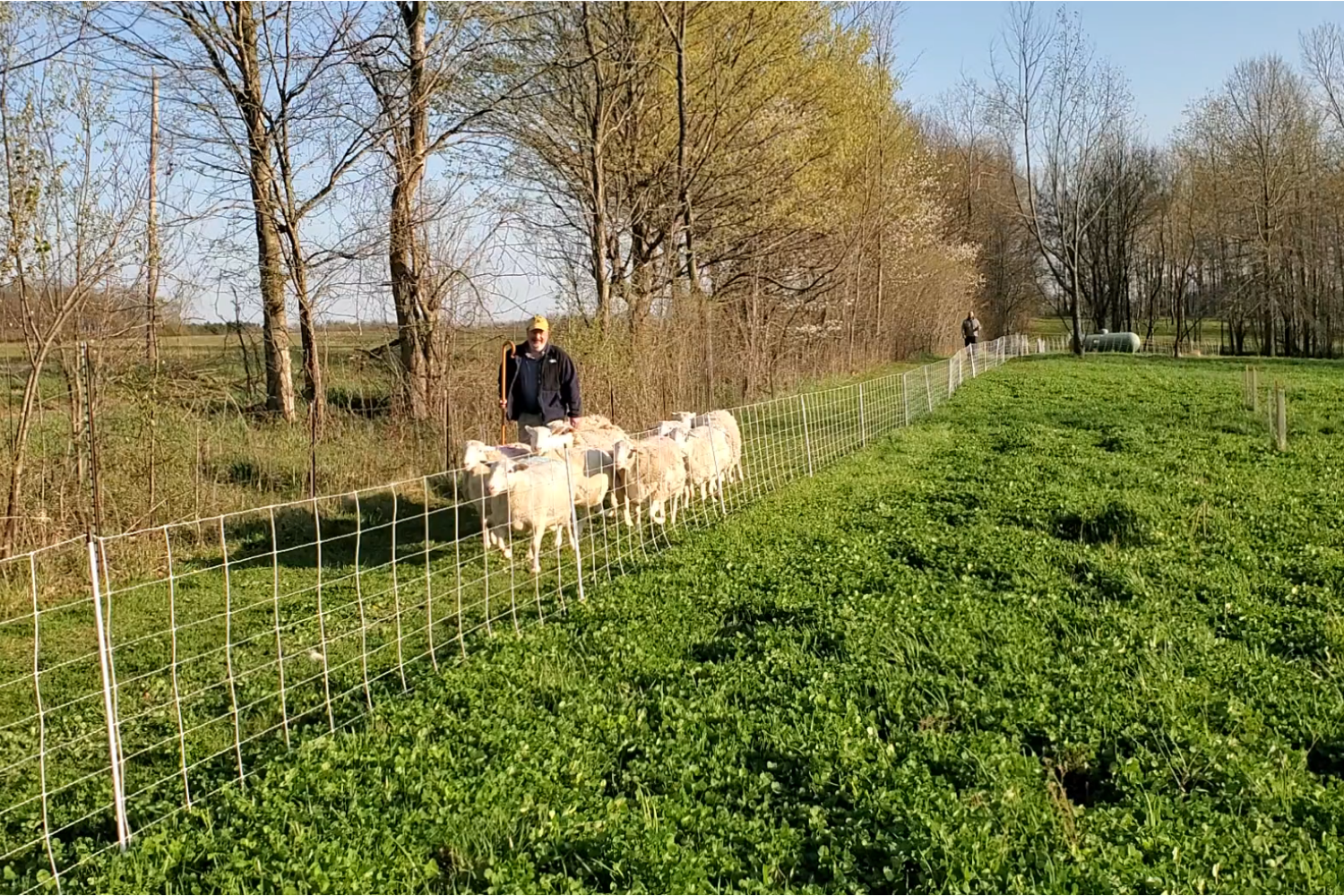This Q&A is a part of our on-going campaign for a full, five-year Farm Bill. By centering the needs of land stewards like Emily, we believe the Farm Bill can help build more resilient agricultural and forestry systems — supporting communities, strengthening the climate, and protecting the environment.
While many federal programs focus on soil carbon outcomes, soil health is often more relevant to farmers, as it’s directly tied to the larger systems they manage every day. Emily Macdonald runs Greenfield Grazing, a grazing operation in Michigan that integrates practices like silvopasture to improve forage quality and animal health.
In this Q&A, Emily offers insights into conservation, productivity, and the real constraints facing farmers, such as land access, upfront costs, and the need to make decisions with limited information. Emily also shares how she approaches soil health on her own farm, what’s working, and what kind of policy support could help farmers better steward a vital public natural resource.
The below interview has been edited and abridged for clarity.
Q: What does soil health mean to you on your farm?
Emily: I don’t have a scientific background in soils, but as a farmer, the question I’m really asking is: is the soil functioning well enough to grow food or other agricultural products? From an ecological point of view, soil can be healthy even if it’s not producing food; it just depends on the biome.
But my job is food production. I want what I grow to have the right nutrient content. I want the meat products we sell to be nutritious for people. I want to grow high-quality, high-yield forage. Ultimately, our farm has to break even. If we’re using inputs, they have to make sense economically. We want the water and nutrient cycles working well, and we want soil aggregates that leave room for air and roots.
How you quantify these characteristics, though, is up for debate. Like many farmers, I’m not always sure what I’m supposed to be measuring. You hear a lot about carbon sequestration now that regenerative agriculture has gained popularity. But as they say, you can have anything, you just can’t have everything. Part of my job is optimizing a system, not a single factor, and making sure it’s in balance.
Q: What has been the most impactful factor for improving soil health on your operations?
Emily: My system is very low input. It’s a grazing system, and managing that, for both animal performance and forage performance, relies heavily on the soils. Our pasture yields are good, and we use soil web surveys that tell you what kind of yield to expect based on the soil you have.
We have one field that started out with low soil organic matter and biological activity after years of synthetic fertilizer and pesticide use, alongside an unvaried rotation of corn, soy, and wheat before we took it over. We transitioned it to hay, which is a perennial, so now there are roots in the ground year-round. Three years later, it’s still underperforming compared to my pastures where sheep graze, but it’s improved.
We know from NRCS’s four principles of soil health that keeping roots in the soil and keeping soil covered are both really important. We also try to keep residue on our soil surface and apply compost to add carbon to the soil.
Q: How has prioritizing soil health been difficult? What support would be helpful?
Emily: I think we need more on-farm trials to actually show what kinds of management practices make a positive difference for farmers. People are starting with different soils and different goals, but there has to be some idea of what works best under different conditions.
I send in soil tests every three years, but I’m not always sure what to do with the results. The tests can be expensive and sometimes take a long time to come back. There’s lots of good information, and sometimes there are recommendations, but how do I actually apply that on my own unique farm?
I’ve been farming for less than 10 years, and there’s so much to consider when making decisions.When gathering information , I try to avoid for-profit companies whose business is selling to farmers. I think public support is important, to make sure more people can access information and guidance.
Q: What do you wish policymakers in DC knew about land stewardship?
Emily: Soil is a public natural resource.
Forty-five percent of the land in the US is used for agriculture, and farmers and foresters are stewarding this land on behalf of everyone. But if you’re running a farm or ranch, short-term economic needs can sometimes override long-term stewardship goals. That is just the reality of the food system and policy landscape that we are in. We live in a system that pays you for yield.
The government has tried to compensate land stewards who adopt practices that improve soil, but soil health is a long-term project. Depending on what you grow, you might see reduced yields in the short term. Programs like the Environmental Quality Incentives Program (EQIP) or the Partnerships for Climate-Smart Commodities initiative are a step in the right direction. As a taxpayer who cares about the environment, I think that’s a good use of public money. Soil is a natural resource, like clean air and clean water. If nothing else, it’s essential for food security, and the government should help incentivize private landowners to care for it.
USDA currently spends a lot of its budget on price supports and crop insurance for commodities. I’d like to see a little more balance with more support for conservation agriculture. It might not pay off right away, but it matters in the long run.
I remember when the EPA was created in the 1970s. Back then, we had acid rain, Lake Erie caught on fire, and air pollution was terrible. Regulations were put in place, and there was a big emphasis put on conservation, and it really cleaned things up. It can be done.
Q: If you could tell all land stewards about one practice or tip, what would you share?
Emily: The first things that come to mind: study perennial agriculture systems, study traditional food growing systems for your location, and plant more trees if you live in a tree-supporting biome.
Q: What’s your favorite part about working with the land?
Emily: The incredible beauty and complexity of the natural world. It keeps me going. There’s always something to learn, there’s always amazement.
Edited by Ana Little-Saña. Image by Emily Macdonald.

